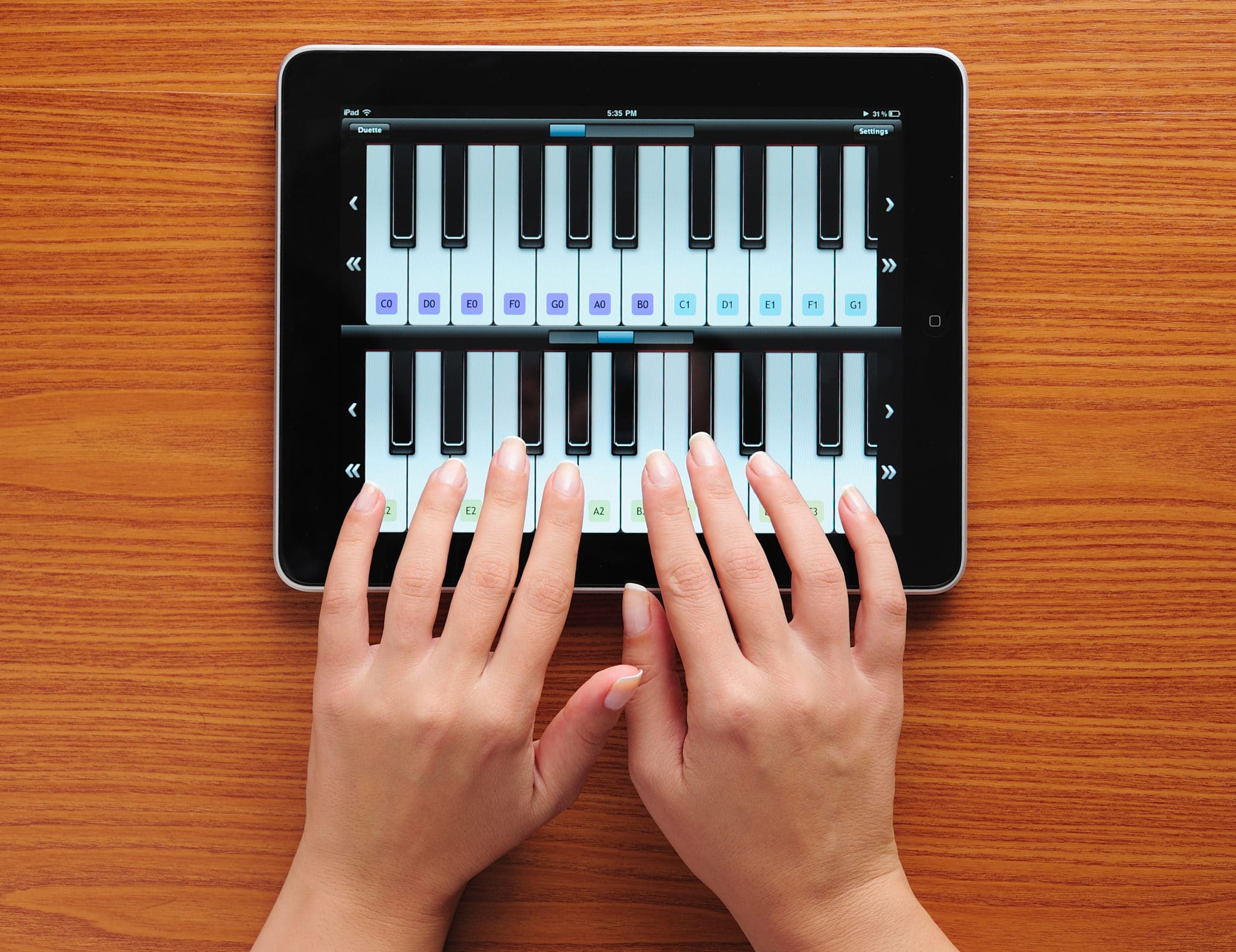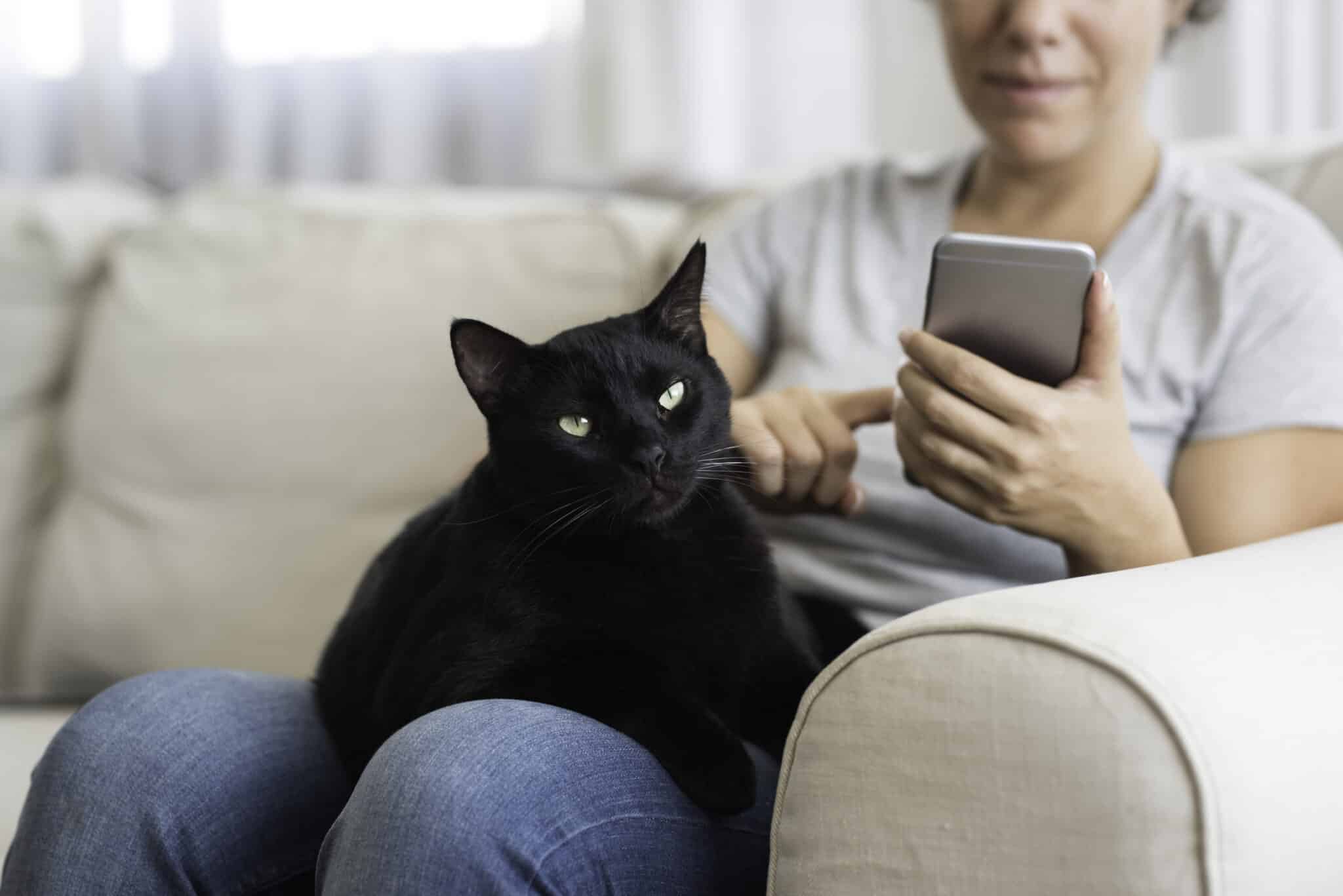Want to learn to play piano? You may think it’s impossible if you don’t have a piano or keyboard. But luckily, there are ways to learn to play the piano using tech only.
Whether you’re already musically inclined or totally new to learning an instrument, technology can help. These clever bits of tech can help you learn to play piano, even if you don’t have access to the real thing.
Learn to Play Piano Online
Watching video lessons online is an ideal way to start you on the road to becoming a piano player even without a piano.
Piano Nanny online piano lessons have been available since 1994, so the site has an outstanding reputation. Piano Nanny offers lessons for beginners all the way up to intermediate players. The lessons combinine text, imagery, and audio files to help you learn various piano concepts.
One good thing about Piano Nanny is students don’t need to use a piano until the last few lessons in the beginner sections. This means you spend time focusing on music theory, how to read sheet music, and other concepts before actually playing the piano.
Practice Keystrokes on Your Tablet
Learning to play piano is a combination of learning note recognition and developing muscle memory to make the right keystrokes. All of your fingers have a role to play when pressing the keys, so it’s important to learn proper finger placement.
The Yousician app gives you an on-screen keyboard with a visual reference. It shows you which fingers you should use to hit the proper notes as you play. In a sense, the app is set up like a gaming experience. Colored notes stream across the screen and you have to follow along by pressing the right keys. You get real-time feedback with progress trackers so you’re teaching your fingers what to do before you even sit down at a real piano.
Learn Simple Songs on Your Phone
Nothing quite spurs your interest in learning to play piano like being able to play a song that you or others recognize. And to learn how to do this, apps like Synthesia are perfect guides for helping you learn basic songs.
Synthesia plays a scroll of music notes. You have to hit the right corresponding keys on the on-screen keyboard to play the song. Doing this helps you get a good visual idea of what keys you should play at what time, how long to hold a note, and even learn pacing in a piece of music.
Tune Your Ears To Know the Notes
When you learn to play piano, you’ll realize one of your best tools is your ears. However, most people aren’t naturally born with the ability to distinguish between different notes.
When you can recognize different notes by their tone, you can learn how to work through songs or translate the sounds you hear when trying to mimic songs.
Functional Ear Trainer is an app you can download for your Android or iOS device that follows a 10-minute-per-day process to teach you how to recognize notes by ear. So, with just a short time commitment every day, you gradually train your ears and learn note recognition.
Learn To Read Sheet Music With Apps
To become skilled at playing piano, learning sheet music is essential. But this skill can be complicated because reading notes is almost like learning to read an entirely new language. And just as it is when learning a new language, it takes time and practice to grasp and recall what you see and then apply those concepts while you play.
The Vivace music reading app, which is only available through Google Play, helps people learn how to read sheet music without the need for an instrument. The app offers lessons via:
- Illustrated step-by-step tutorials
- Customized lessons
- Note recognition exercises
Vivace boasts more than 100 unique lessons that cover:
- All 15 key signatures
- Note ranges
- English and Italian note names
Learn To Play Piano With No Piano at All
Even though you may eventually have to invest in a piano or digital keyboard to help you learn to play piano, access to the right technology can get you off to a good start.
From learning notes to taking basic piano lessons using your phone or tablet, you can pick up some valuable skills before you make an investment in an actual instrument.






